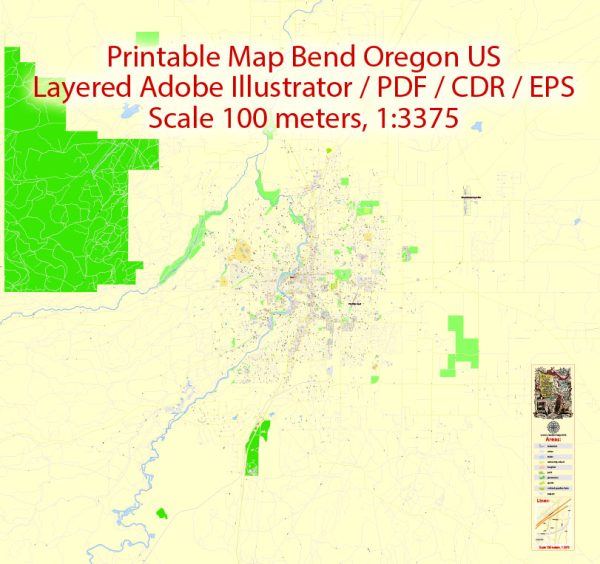Bend, Oregon, located in the central part of the state, has a unique history of urban development that reflects the region’s growth and transformation over the years. Here is a brief description of Bend’s urban development history:
- Early Settlement: Bend’s history dates back to the early 1900s when it was initially established as a small sawmill town called “Farewell Bend.” The town was named after a nearby bend in the Deschutes River. Logging and the timber industry were the primary drivers of the local economy during this period.
- Railroad and Growth: The arrival of the Great Northern Railway in 1911 played a significant role in Bend’s growth. The railroad facilitated the transportation of timber and other goods, connecting Bend to markets across the country. This accessibility helped the city expand rapidly.
- Timber and Logging: For many decades, Bend remained a thriving hub for the timber and logging industry. Lumber mills and wood processing plants were a common sight in the city. The industry’s success led to the development of various neighborhoods to house the growing population of workers and their families.
- Decline of Timber Industry: In the latter half of the 20th century, the timber industry began to decline, resulting in significant economic challenges for Bend. As timber jobs decreased, the city faced a transition period, searching for new economic opportunities.
- Tourism and Recreation: Bend’s transformation began when it capitalized on its natural surroundings. The city’s proximity to the Cascade Mountains and numerous outdoor recreational opportunities, including skiing, hiking, and mountain biking, made it a destination for tourists and outdoor enthusiasts.
- Tech and Innovation: In the late 20th and early 21st centuries, Bend diversified its economy by attracting technology companies and fostering a vibrant startup culture. The city’s quality of life, natural beauty, and outdoor amenities made it an attractive place for individuals and companies in the tech sector.
- Growth and Urban Planning: Bend has experienced substantial population growth, leading to a surge in urban development and housing construction. This growth has prompted efforts to balance development with the preservation of the city’s natural beauty and character. Urban planning and zoning regulations have played a crucial role in guiding the city’s expansion while maintaining a connection to its natural surroundings.
- Sustainability and Conservation: Bend has also prioritized sustainability and conservation, aiming to protect its environment and open spaces while managing growth responsibly. Initiatives include green building practices, energy efficiency programs, and the preservation of parks and natural areas.
- Cultural Vibrancy: Over the years, Bend has developed a rich cultural scene, including art galleries, music venues, and a burgeoning food and beverage industry. This cultural vibrancy has contributed to the city’s appeal and quality of life.
Bend’s history of urban development reflects its evolution from a timber town to a diverse and vibrant community with a strong focus on outdoor recreation, technology, and sustainability. The city’s growth and development continue to be influenced by its natural surroundings and the careful balance between preserving the environment and meeting the needs of its residents and visitors.


 Author: Kirill Shrayber, Ph.D.
Author: Kirill Shrayber, Ph.D.